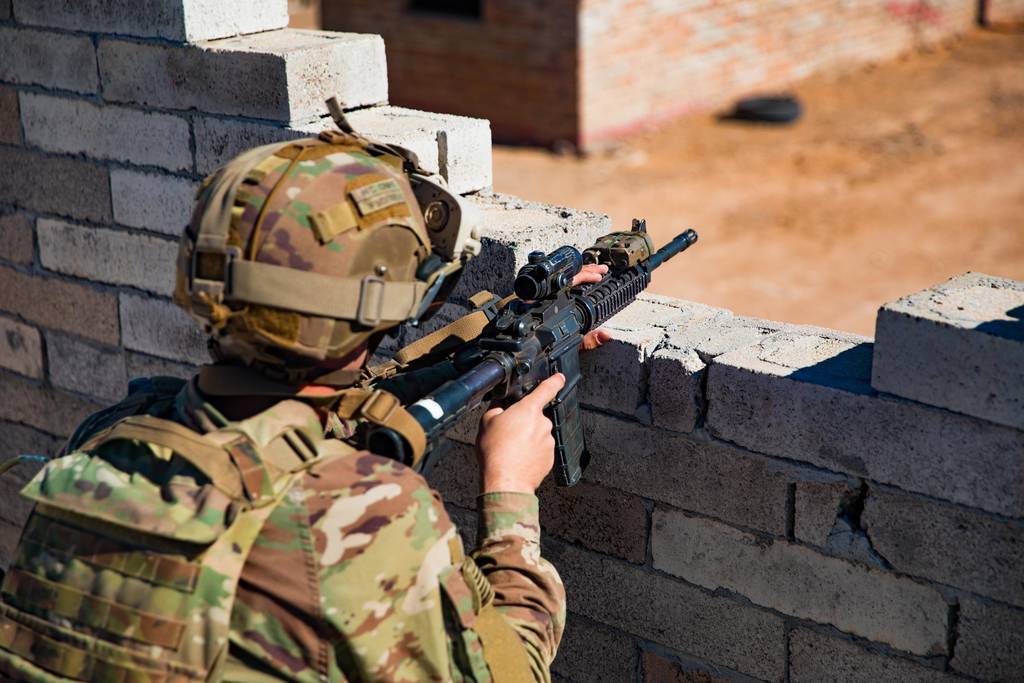PHILADELPHIA — The US Army will pursue sophisticated data-sharing capabilities at this year’s Project Convergence demonstration that officials said will enable the best-positioned military asset to take immediate action, regardless of national affiliation.
“We’re never going to fight as just a joint organization,” Brig. Gen. Jeth Rey, director of the Network Cross-Functional Team, said May 10 on the sidelines of a summit with contractors and potential suppliers. “We’re going to always have our coalition partners. So we want the effects to be: If they’re in the best area to shoot, we want them to shoot.”
Now in its third year, Project Convergence seeks to integrate artificial intelligence, robotics and autonomy to improve battlefield situational awareness, connect sensors with shooters and accelerate decision-making. For the first time this fall, it will involve international participation, with Australia and the UK actively taking part while Canada and others observe.
The international collaboration, which may also include New Zealand, comes as the Pentagon pursues what’s known as Joint All-Domain Command and Control, or JADC2, the ability to exchange information across air, land, sea, cyber and space and tie together once- incompatible or siloed systems. The demonstration is a critical next-step, Rey said, and builds upon the successes of previous experimentation and analysis.
“So, we’re going to learn a lot of lessons here,” he said. “And it’s not only just data. We’re talking about sensor data off of our mission systems to ensure we can share it not only with our joint partners, but also share it with our coalition partners.”
Project Convergence is the Army’s contribution to JADC2, like the Air Force’s Advanced Battle Management System and the Navy’s Project Overmatch. This year’s tests will stretch across the US, including the National Training Center at Fort Irwin and the Navy’s Electronic Warfare Range at China Lake, both in California.
The upcoming demonstration of cutting-edge tech will focus on both the Indo-Pacific and European theaters. Russian and Chinese threats colored the exercises, Defense News reported in March. Russia began massing materiel on its border with Ukraine as Project Convergence 21 wrapped.
“You’ve got the right sensor through the right command-and-control node getting to the right shooter to be able to facilitate that kill chain, and you’re getting information to decision makers,” said Army Maj. Gen. Robert Collins, the program executive officer for command, control and communications-tactical, at the two-day summit.
A heavy emphasis on data and integration, beyond basic cooperation, already exists heading into Project Convergence 22, Army Chief Information Officer Raj Iyer said May 9.
“We know we have the best weapon system platforms in the world,” he said. “But, truly, for us to establish strategic deterrence in the future, and if we have to win decisively in large-scale combat operations, that’s going to only happen through decision dominance.“
“So for us to achieve decision dominance,” Iyer said, “it’s all about the data.”
Colin Demarest is a reporter at C4ISRNET, where he covers networks and IT. Colin previously covered the Department of Energy and its National Nuclear Security Administration — namely nuclear weapons development and Cold War cleanup — for a daily newspaper in South Carolina.
More In IT/Networks
:quality(70)/cloudfront-us-east-1.images.arcpublishing.com/mco/GJ2L55LR6VCR7EBNUSWJ2XQXUQ.jpg)
:quality(70)/cloudfront-us-east-1.images.arcpublishing.com/mco/OXMDCU6EG5F7VIDCOUNZSVKHF4.jpg)
:quality(70)/cloudfront-us-east-1.images.arcpublishing.com/mco/6ZFJFIUWPRHHTC3P2RPDQ4WQYU.jpg)
:quality(70)/cloudfront-us-east-1.images.arcpublishing.com/mco/XFAECDSZZ5FQ3ICRXLXOOUHJ6Y.jpg)
.
